Pitch in music refers to how high or low a sound is perceived, and is super important for creating melodies, harmonies, and overall musical structure.
It also helps ensure that all notes and instruments in a track are in tune.
Yes, even if you’re a digital producer (which most of you are), understanding all about pitch in music is key.
It will help you craft better melodies, achieve perfect harmony, and fine-tune your productions.
That’s why we’re breaking down everything you need to know about pitch in music, like:
- The fascinating science of sound waves ✓
- How frequency shapes pitch (lower frequencies/higher frequencies) ✓
- Music theory basics ✓
- Exploring definite and indefinite pitches ✓
- Mastering absolute, relative, concert, and reference pitch ✓
- The magic of musical scales ✓
- How different instruments create unique pitches ✓
- Unlocking vocal pitch perfection ✓
- Understanding pitch notation in music ✓
- Pitch correction & creative manipulation techniques ✓
- Applying pitch in digital production ✓
- Much more about pitch in music ✓
After this article, you’ll know everything about pitch in music so you can accurately tune your instruments and samples.
Plus, you’ll be able to manipulate pitch creatively and ensure your tracks sound super polished and on point.
As well as make sure every element in your music is harmonized perfectly, like a true professional.
So let’s dive in…
Table of Contents
What is Pitch in Music?

Pitch in music refers to how high or low a sound is perceived 一 the specific frequency of a sound wave determines the pitch, measured in Hertz (Hz).
For instance, a middle C note on a piano vibrates at approximately 261.63 Hz, producing a specific pitch.
In music, pitch is key when it comes to creating melodies and harmonies.
Different musical instruments produce different pitches, with instruments like the piano and guitar offering a wide range of different pitches and, in turn, vibes.
Understanding pitch in music is essential for musicians and producers to create harmonious and balanced tracks every time.
Plus of course, enhance your knowledge of music theory basics.
Don’t worry, we’ll be breaking everything down in detail throughout the article, and even how it translates to digital production at the end.
The Science of Sound Waves
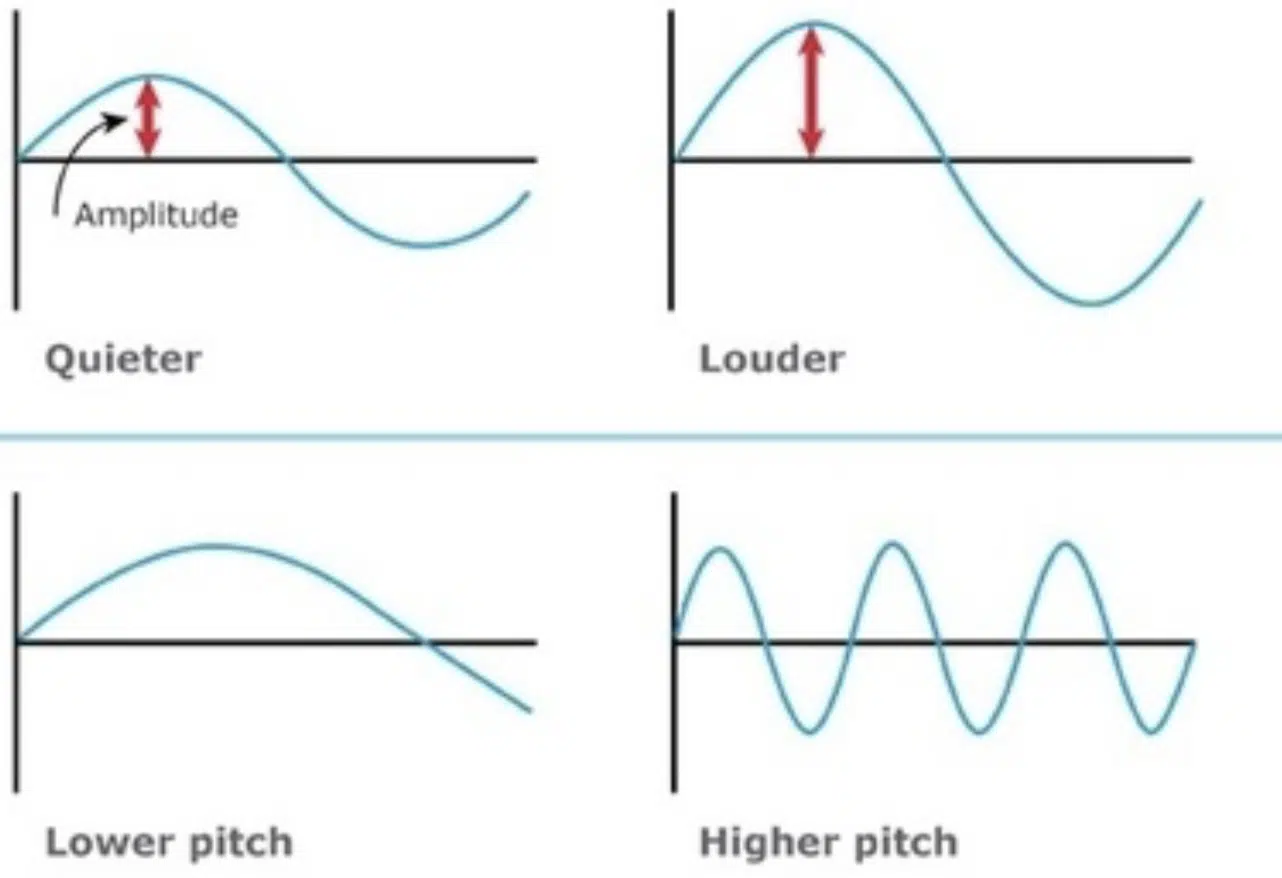
In a nutshell, sound waves vibrate through the air, producing the sounds we hear.
When a musical instrument, such as a violin string, vibrates, it creates sound waves that travel through the air and they cause fluctuations in air pressure.
Those tiny fluctuations are what the human ear perceives as sound 一 pretty simple and straightforward, am I right?
The frequency of these sound waves determines the particular pitch of the sound.
- Higher frequency sound waves produce a high pitch.
- Lower frequency sound waves result in a low pitch.
Understanding sound waves is key for manipulating and shaping sounds in digital production, so don’t just overlook it.
I know with all the technology there is today you could just say, ‘ehh, forget it, I don’t really need to know,” but it can take your skills to the next level.
Knowing how sound waves work allows you to fine-tune frequencies, achieve perfect pitch, and create unique soundscapes that stand out.
Frequency and Pitch
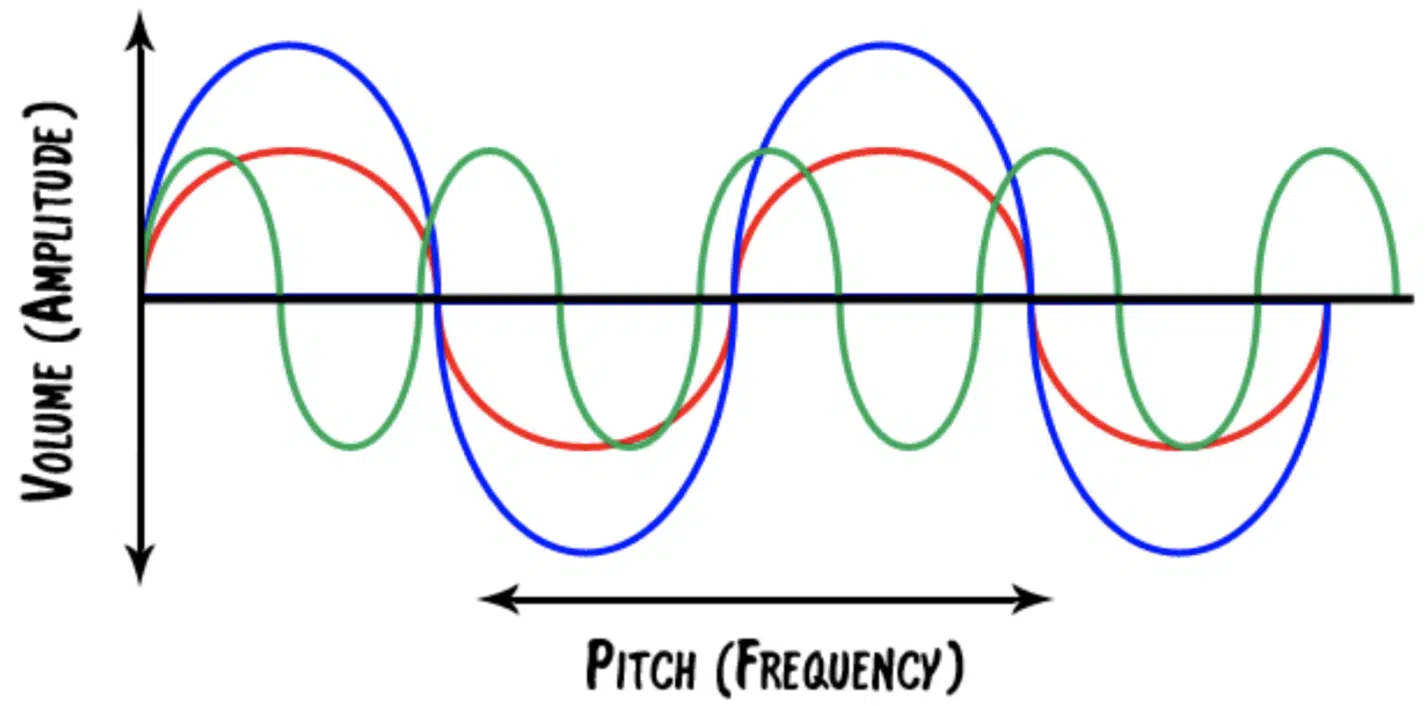
Frequency and pitch are closely related concepts in music.
Frequency refers to the number of vibrations or cycles per second of a sound wave, measured in Hertz (Hz).
A higher frequency results in higher pitches, while a lower frequency results in a low pitch, as we touched upon in the last section.
The fundamental frequency is the lowest frequency of a sound wave and determines the particular pitch of the note.
For example, the note A above middle C on a piano has a fundamental frequency of 440 Hz, which is known as the concert pitch.
Different musical instruments each have a unique frequency range that defines their pitch capabilities.
Understanding the relationship between frequency and pitch helps producers like yourself tune their instruments accurately and create the desired musical pitch.
NOTE: Frequency analysis tools help visualize and adjust the particular pitch of sound waves precisely, so it’s a great learning experience.
Different Pitches: Breaking it Down
Pitch in music can be broken down into different categories, like definite and indefinite pitch, concert pitch, etc.. Understanding these categories is essential for musicians and producers, so let’s get into it.
-
Definite and Indefinite Pitch
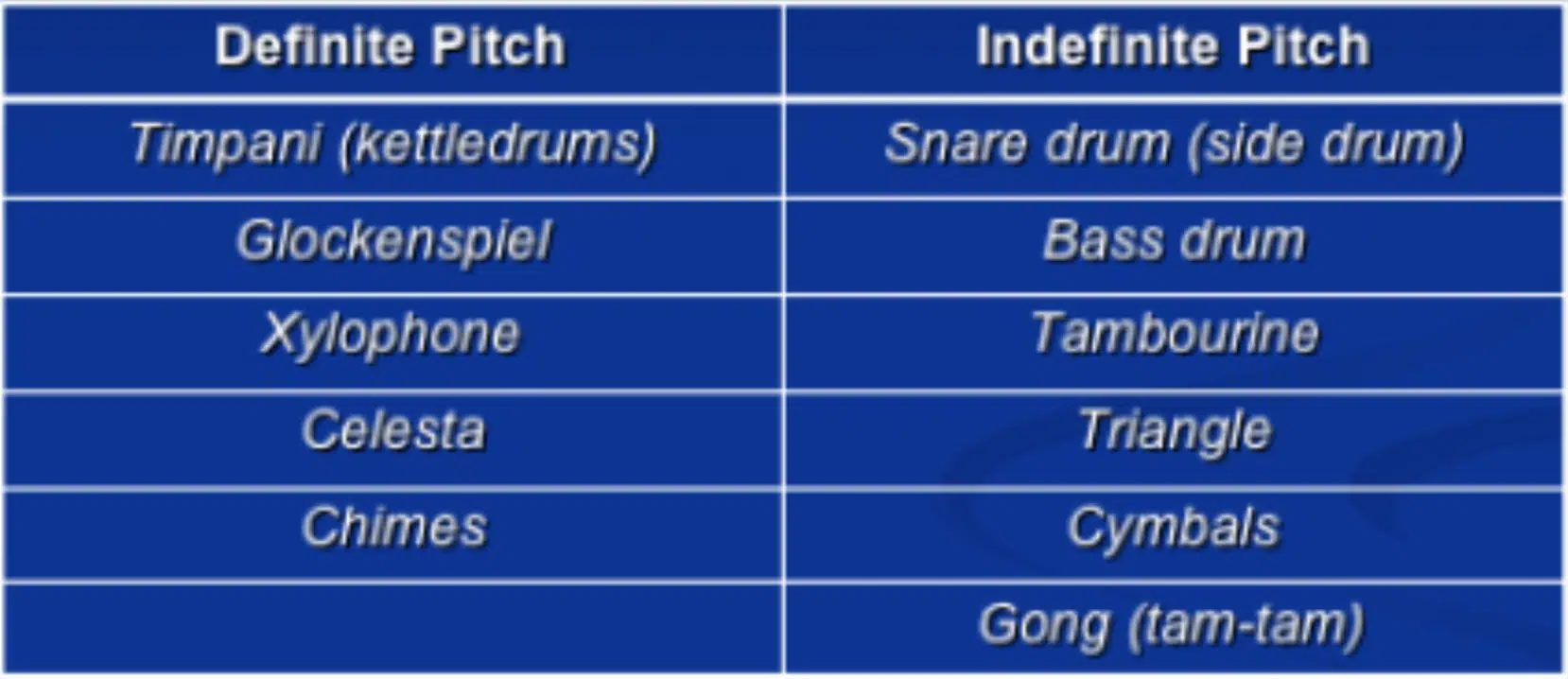
Definite pitch refers to sounds with a clear and distinct pitch, such as those produced by a piano keyboard or guitar.
These instruments can produce specific notes like C, D, or E…
For example, pressing the C key on a piano will always produce a pitch measured at approximately 261.63 Hz (known as middle C).
Indefinite pitch, on the other hand, refers to sounds that do not have a clear pitch, such as a snare drum or cymbal.
These sounds are perceived more as noise than musical notes; interesting, right?
Understanding the difference between definite and indefinite pitch helps in arranging instruments effectively in your compositions.
For instance, in an orchestra, definite pitch instruments like violins play melodies, while indefinite pitch instruments like drums add rhythm.
Both definite and indefinite pitch play vital roles in creating a rich and dynamic musical piece, so recognizing the types of pitch each instrument produces is key.
-
Absolute Pitch
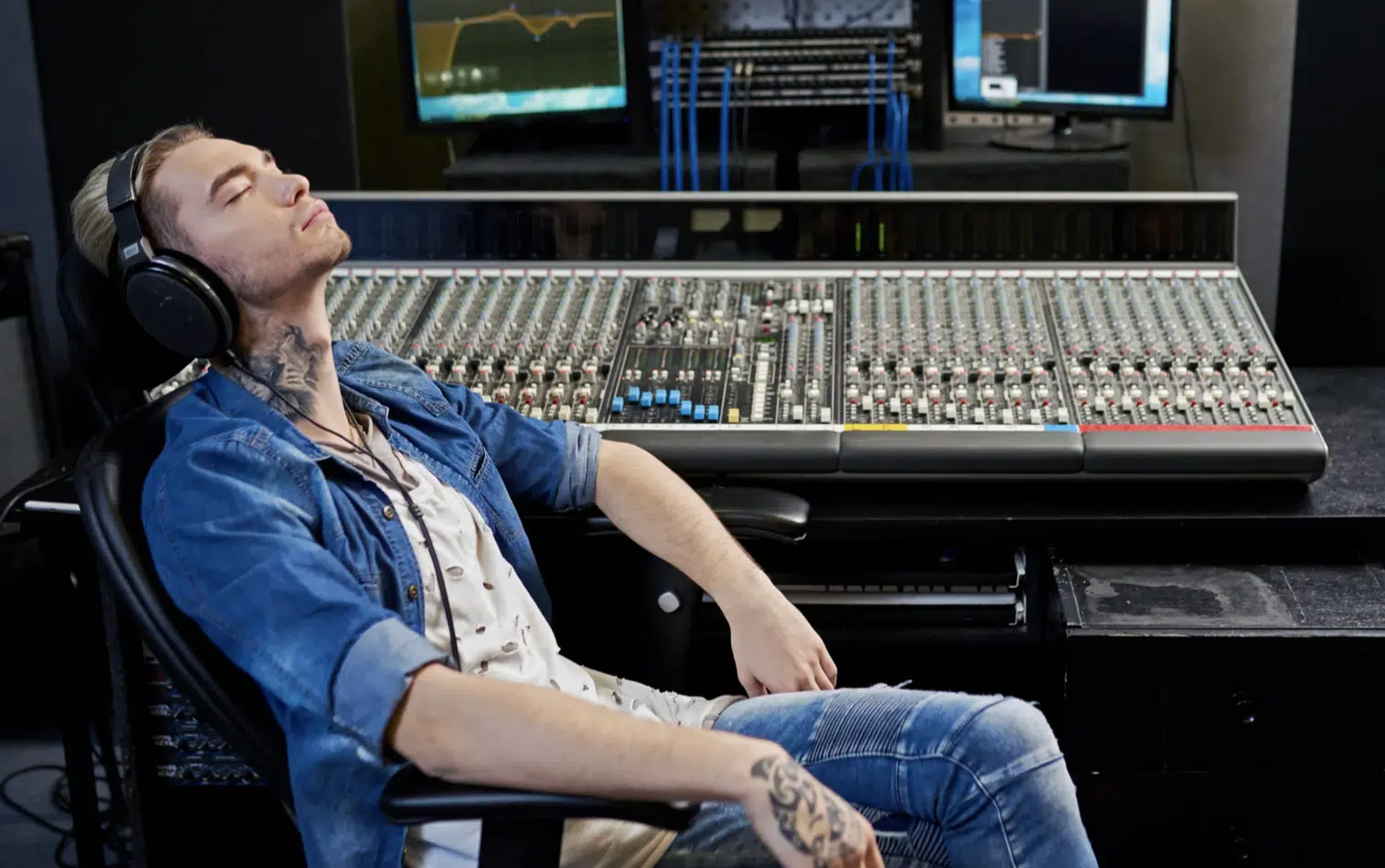
Absolute pitch, also known as perfect pitch, is a person’s ability to identify or produce a specific pitch without any reference.
This insanely rare skill allows musicians to name a note just by hearing it, but I thought I should throw it in here just in case you were curious.
For example, someone with absolute pitch can hear a note played on a piano and immediately recognize it as a C or F#.
This skill is incredibly useful for tuning instruments and composing music by ear.
Absolute pitch can be developed through rigorous training, but it is often considered an innate ability (especially in today’s digital world).
Understanding absolute pitch helps producers and musicians create accurate and harmonious music.
But honestly, don’t worry too much about it, especially if you’re producing in a DAW.
-
Relative Pitch

Major and minor intervals
Relative pitch refers to the ability to identify the pitch of a note in relation to another note.
Unlike absolute pitch, which requires no reference, relative pitch depends on understanding the intervals between notes.
For example, if a musician knows that a note is a C, they can identify an E by recognizing the interval of a major third above C.
This skill is essential for:
- Playing by ear
- Improvising
- Transcribing music
Musicians with strong relative pitch can quickly learn new pieces and adapt to different musical contexts like it’s nothing.
Developing relative pitch is a valuable skill for any musician or producer, but again, it’s not completely necessary in today’s age.
-
Concert Pitch
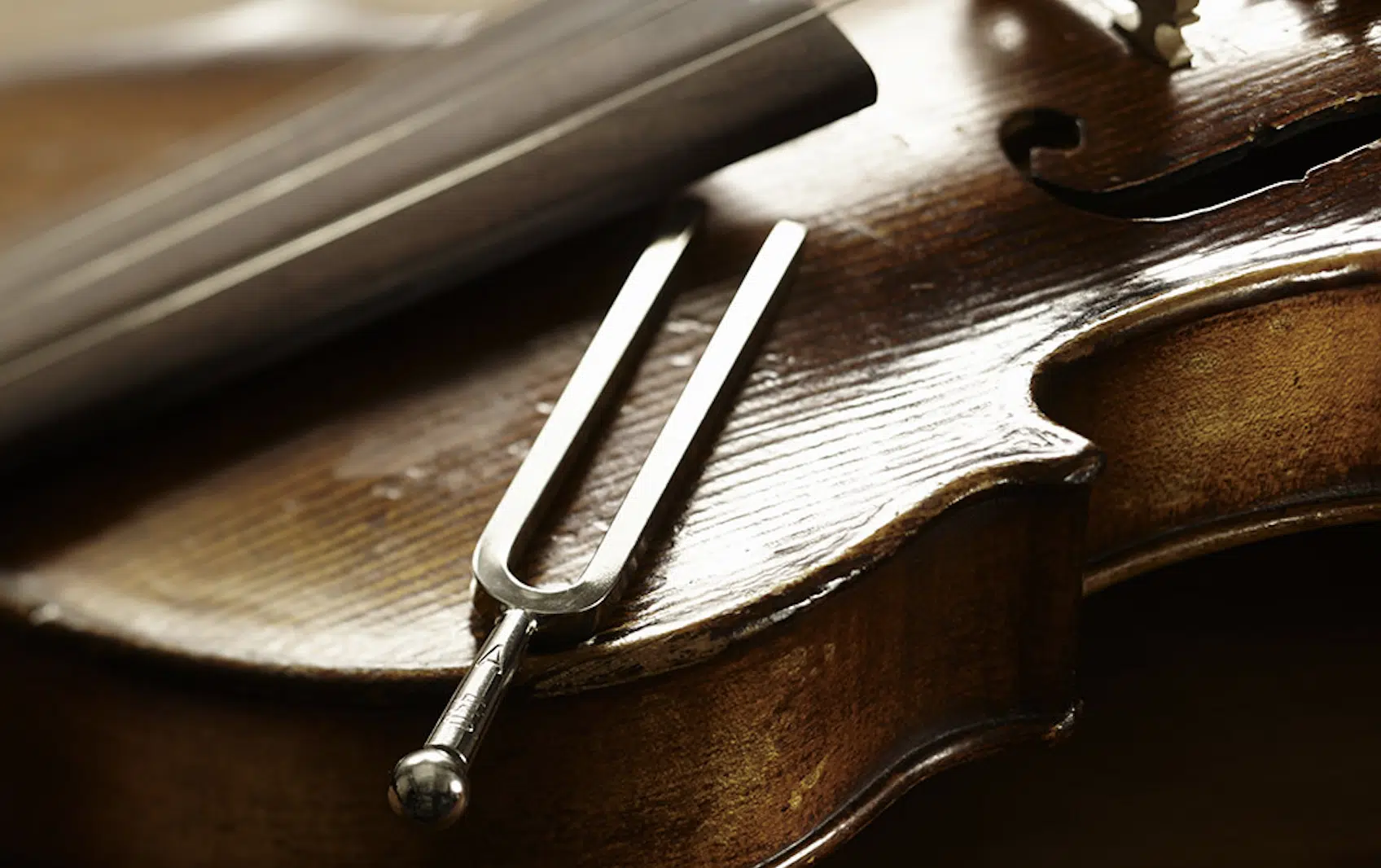
Concert pitch is a standard pitch reference used for tuning musical instruments 一 the most common concert pitch is A4, which is set at 440 Hz.
This pitch serves as a reference point for tuning all the instruments in an ensemble to make sure they are in harmony and not all over the place.
For example, an orchestra tunes to the A4 played by the oboe.
Standardizing concert pitch helps musicians play together like a dream, regardless of their individual instruments (a truly ethereal experience).
Understanding concert pitch is key for both live performances and studio recordings.
As a producer, you’ll often use concert pitch to ensure that all tracks of any digital production are in tune.
-
Reference Pitch
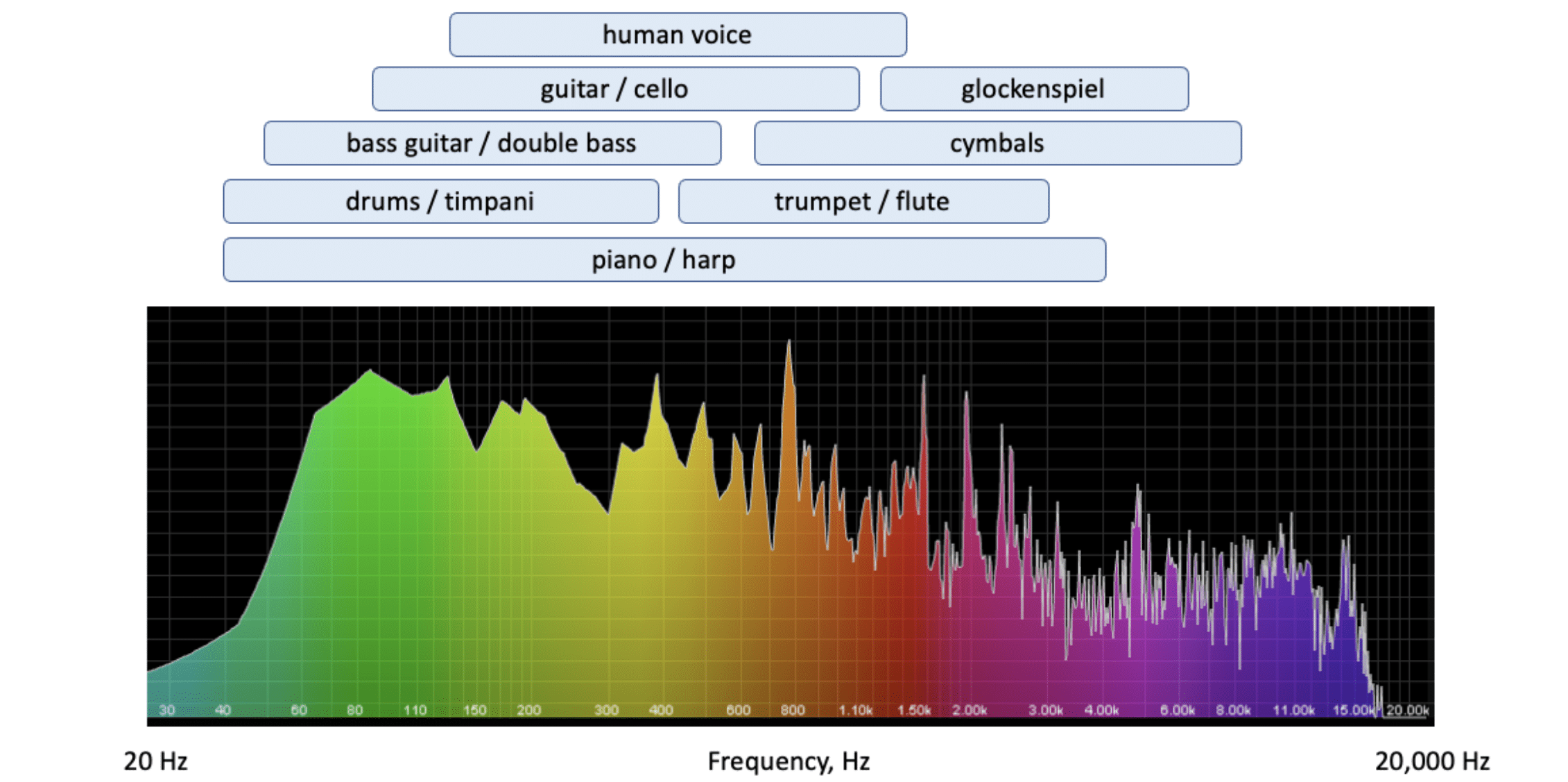
A reference pitch refers to a specific pitch used as a standard for tuning instruments.
And, as I mentioned, the most common reference pitch is A4 at 440 Hz, but other standards exist, such as A4 at 432 Hz.
This reference pitch helps to tune instruments accurately, for example, digital tuners and tuning forks are often set to the reference pitch of A4 at 440 Hz.
Using a consistent reference pitch ensures that all instruments and tracks in a production are in harmony.
Producers rely on reference pitch to maintain tuning consistency across different sessions and projects.
The Musical Scale (How Pitch is Organized in Scales)
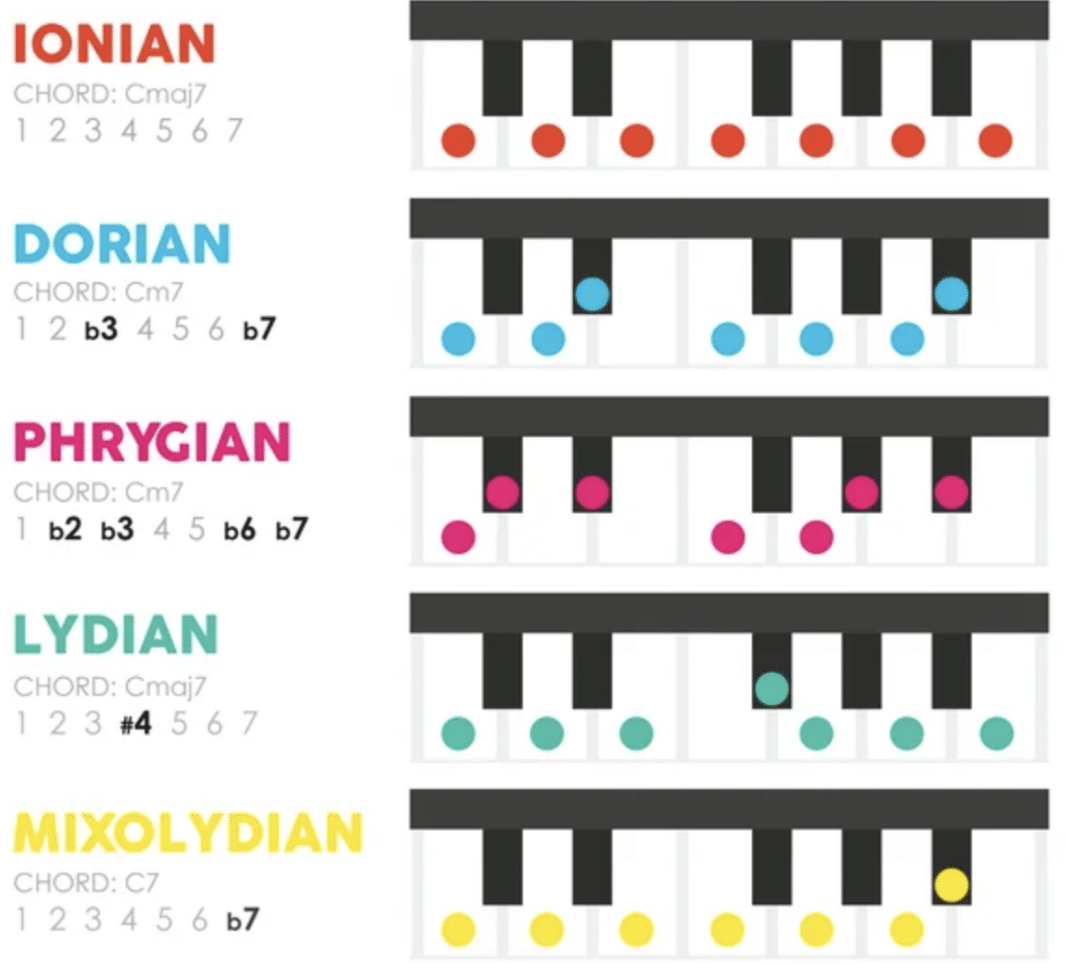
Musical scales organize pitches in a specific sequence, creating the foundation for all of the melodies and harmonies you know and love (and some you can create).
The most common scale in Western music is the C major scale, which consists of seven notes: C, D, E, F, G, A, and B.
Each note in the scale corresponds to a specific pitch.
For example, the note C in the C major scale has a frequency range around 261.63 Hz, while the note G has a frequency around 392 Hz.
Understanding musical scales will help you create structured and coherent music because different scales evoke different emotions and moods.
So, needless to say, they are powerful tools in the music production world.
Using scales, you can develop melodies that resonate with listeners…
For example, the minor scale often conveys a somber or melancholic vibe, while the major scale typically sounds happy and bright.
If you want to learn all about the different scales, we’ve got you covered: dorian, ionian, aeolian, lydian, locrian, minor scales, phrygian, chromatic, diatonic, relative scales.
Pitch and Musical Instruments
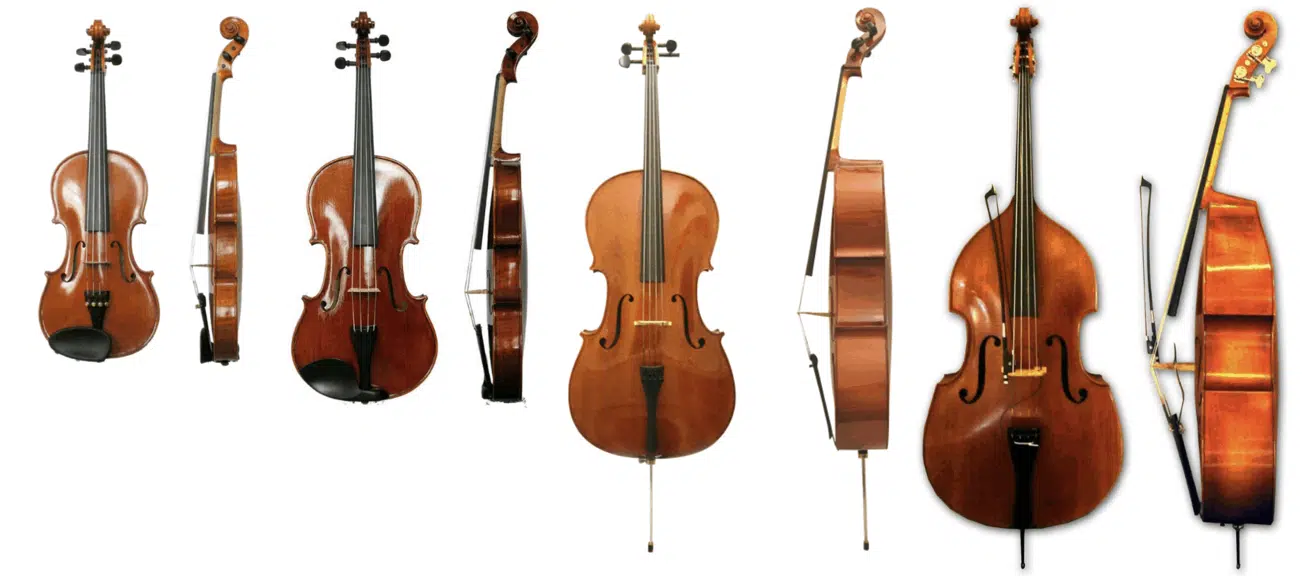
Different musical instruments produce different pitches based on their design and playing techniques.
For example:
- A piano produces a wide range of pitches by striking strings with hammers
- Wind instruments (flute, saxophone, etc.) create pitches by vibrating air columns.
Each instrument has a unique/particular pitch range and timbre and understanding how instruments produce pitch helps in arranging music like a boss.
For example, combining instruments with complementary pitch ranges can create a show-stopping, full sound.
You’ll need to consider the same pitch characteristics of each instrument when composing and mixing music.
Pro Tip: The exact same pitch can sound different depending on the instrument playing it, for instance, a middle C played on a piano will have a distinct timbre compared to a middle C played on a violin or a flute.
This difference in sound is due to the unique harmonic content and sound wave characteristics of each instrument, which contribute to their individual tones and textures.
Understanding these nuances will help you blend and layer different instruments better than ever before 一 creating a super dynamic musical arrangement.
Pitch in Vocal Music
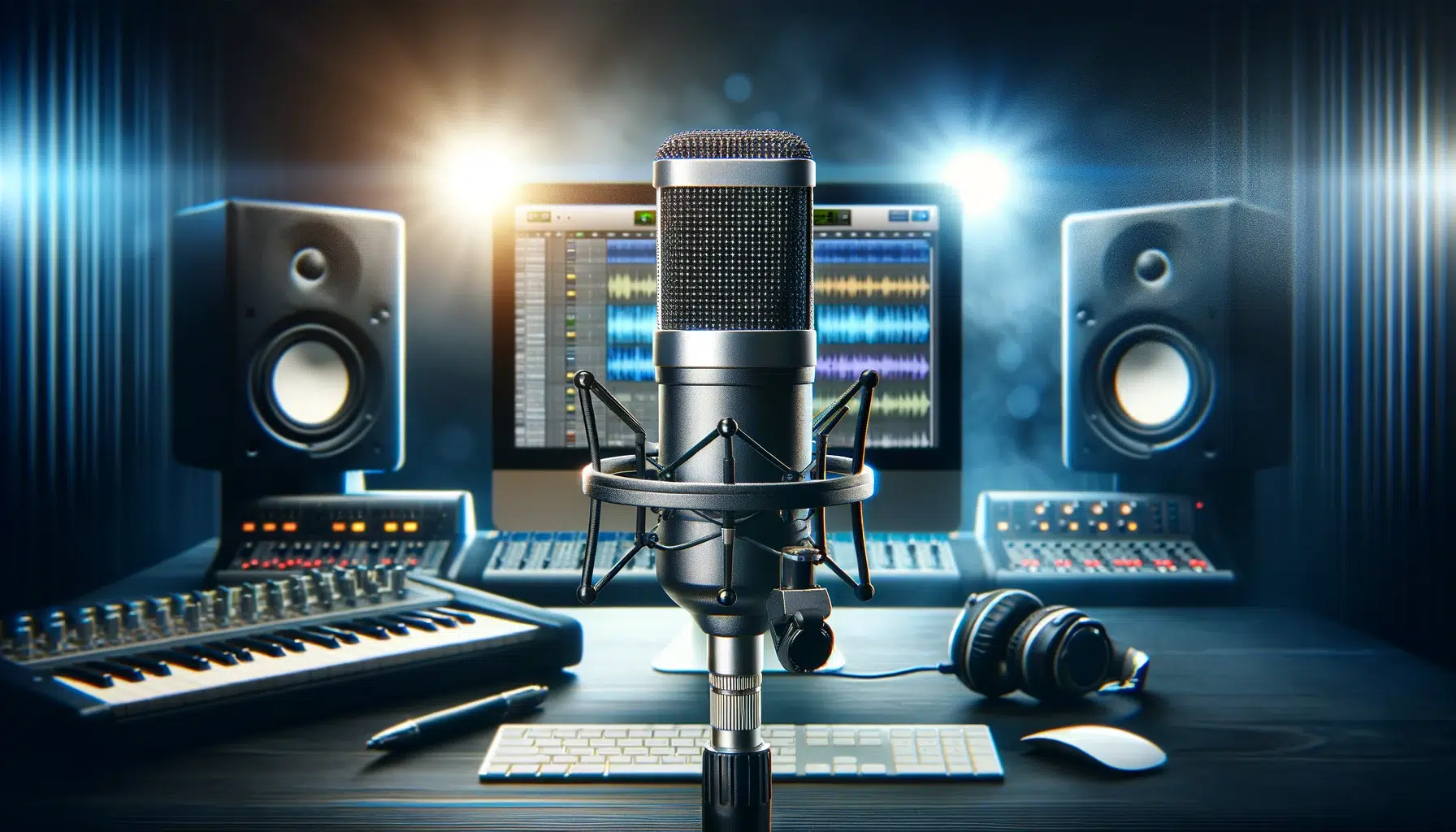
When it comes to vocal music, pitch is controlled by the vibration of the vocal cords (I’m sure you’ve heard of vibrato, right?).
Singers adjust the tension and length of their vocal cords to produce different pitches, for example, producing a higher pitch by tightening vocal cords for faster vibrations.
Vocal pitch is essential for melody and harmony in songs.
Singers often train to improve their pitch accuracy and range, striving for perfect pitch or the ability to sing any note accurately.
Understanding vocal pitch will help you, as producers, work effectively with vocalists if that’s your thing.
Using pitch correction tools, you can enhance the pitch accuracy of vocal recordings 一 ensuring that the vocals fit perfectly within the musical arrangement.
-
Pro Tip: Pitch Notation in Music

Pitch notation in music uses symbols to represent specific pitches on a musical staff, for example, the note C is represented by a specific position on the staff (shown above).
Sharp and flat symbols indicate pitches that are a semitone higher or a semitone lower, respectively 一 remember, a semitone is a half-step.
Understanding pitch notation is essential for reading and writing music whether you’re working with higher pitches or lower pitches.
You’ll most likely just use musical notation software to visualize and edit pitch in your compositions, so you won’t have to worry too much about this.
But, basically, proper pitch notation ensures that musicians perform the intended notes correctly if the ability is needed.
-
Pitch vs Tone
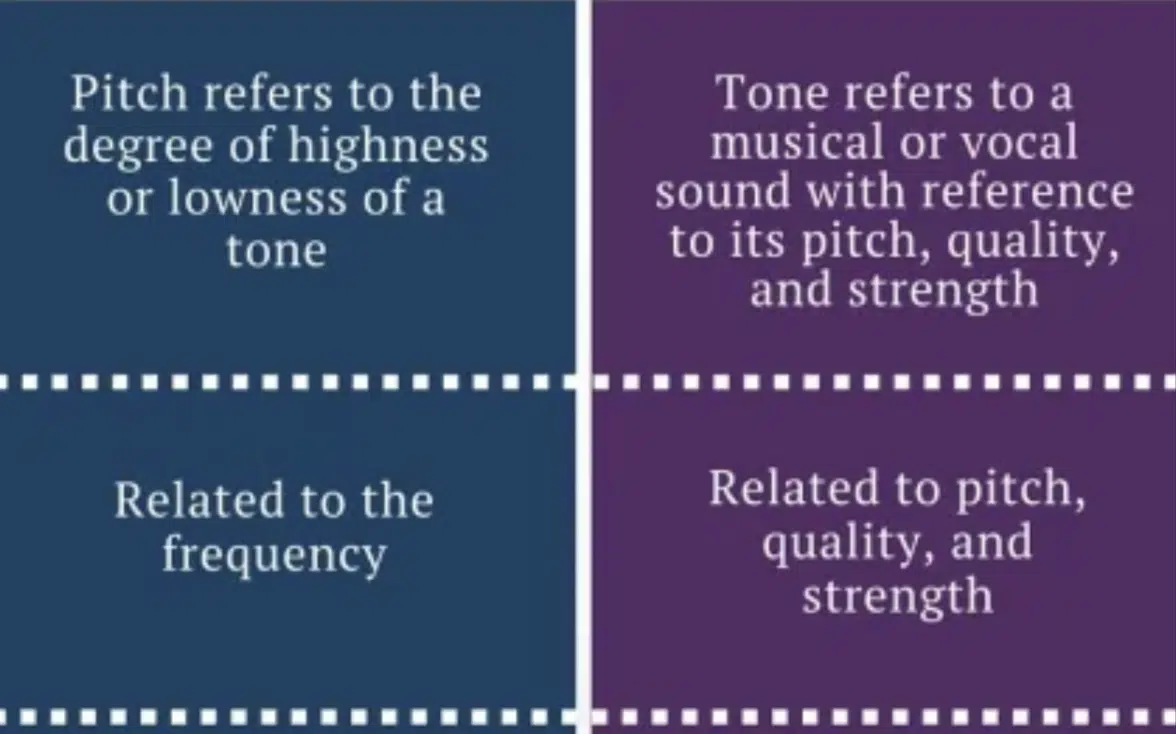
Pitch and tone are closely related but distinct concepts in music.
Pitch refers to the perceived frequency of a sound, as we talked about, determining how high or low a note sounds as we talked about.
Tone refers to the quality or color of the sound.
For example, the note A can have the same pitch on both a violin and a flute, but the tone will be different due to the unique sound wave characteristics of each instrument.
Understanding the difference between pitch and tone is key for musicians and producers, just remember that pitch ensures that notes are in tune, while tone adds character/expression to the music.
In digital production, manipulating both pitch and tone helps with creative sound design techniques and enhanced musical expression, which is always a plus.
-
Pitch Correction and Manipulation
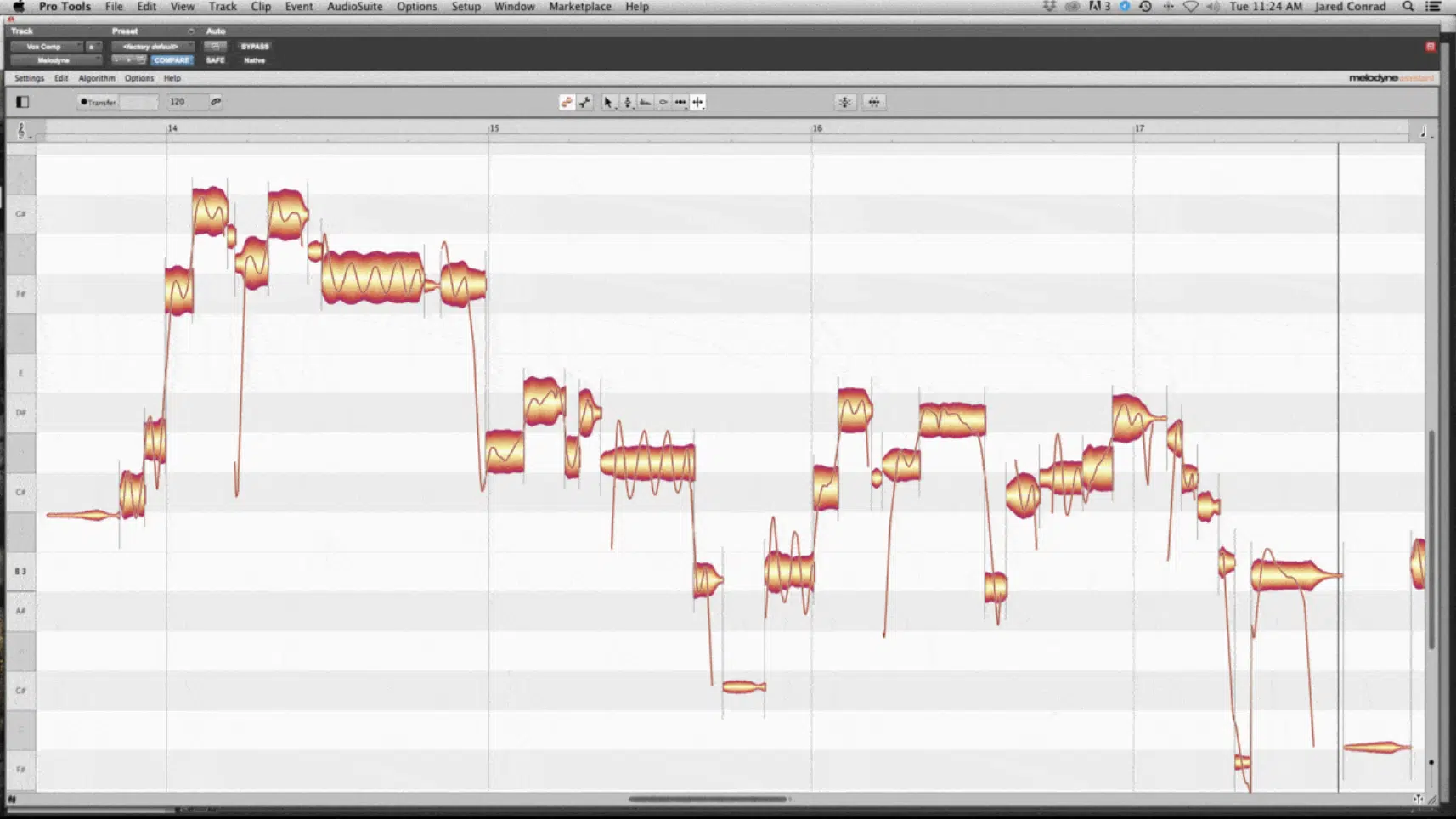
Melodyne
Pitch correction and manipulation like Auto-Tune and Melodyne will help you correct off-pitch notes in vocal and instrumental recordings.
I’m sure you’ve heard about them and use them almost always if you’re dealing with vocals, but for beginners, I thought I’d throw it in there.
For example, if a singer sings slightly flat, pitch correction can adjust the note to the exact same pitch as intended.
Beyond correction, pitch manipulation tools enable creative effects like:
- Pitch-shifting
- Harmonizing
Producers can use these tools to create unique soundscapes and vocal effects.
Understanding how to use pitch correction and manipulation effectively can elevate the quality of any production.
These tools make sure that every specific note sounds precise and intentional, regardless of the vibe you’re going for.
Just please don’t go too crazy with it, that’s just plain ridiculous.
-
Pro Tip: Melodies & Pitch
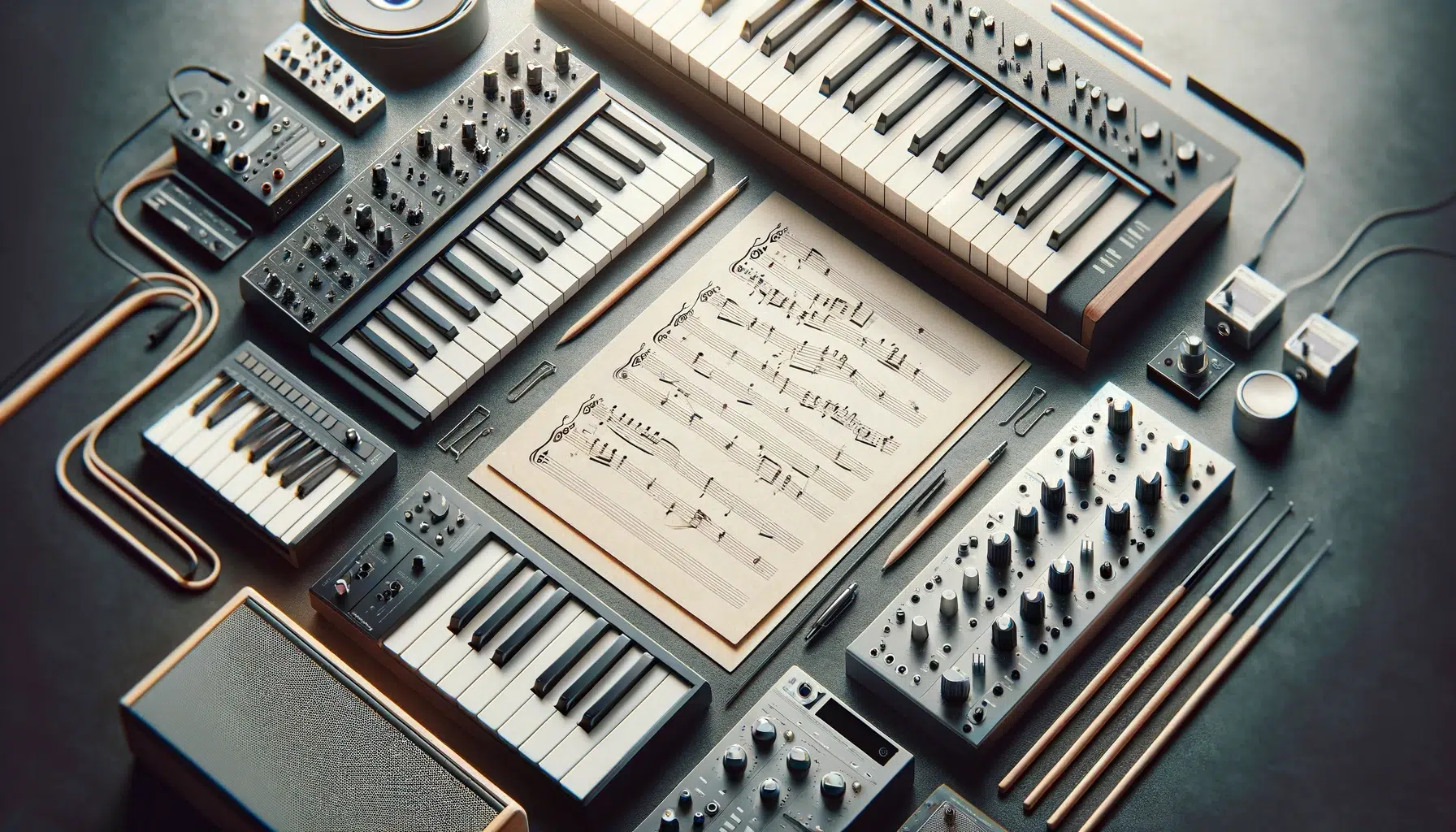
Creating captivating melodies involves a deep understanding of pitch.
A melody is a sequence of pitches arranged in a musical phrase, and the choice of pitch can seriously influence the emotion and impact of the melody.
For example, the melody of “Twinkle, Twinkle, Little Star” follows a specific pitch pattern that is easy to recognize and remember.
I know it’s always the example, but for good reason.
To create memorable melodies, start by selecting a musical scale, such as the C major scale, and experiment with different note combinations within that musical scale.
Pay attention to the intervals between notes 一 larger intervals can create a sense of leap and excitement, while smaller intervals can create smooth and flowing lines.
Also, consider the contour of the melody, which is the overall shape created by the rising and falling pitches.
NOTE: Using variations in pitch can add excitement and dynamics to a melody, making it more engaging for listeners.
So, Why Does Pitch in Music Matter If I’m a Digital Producer?
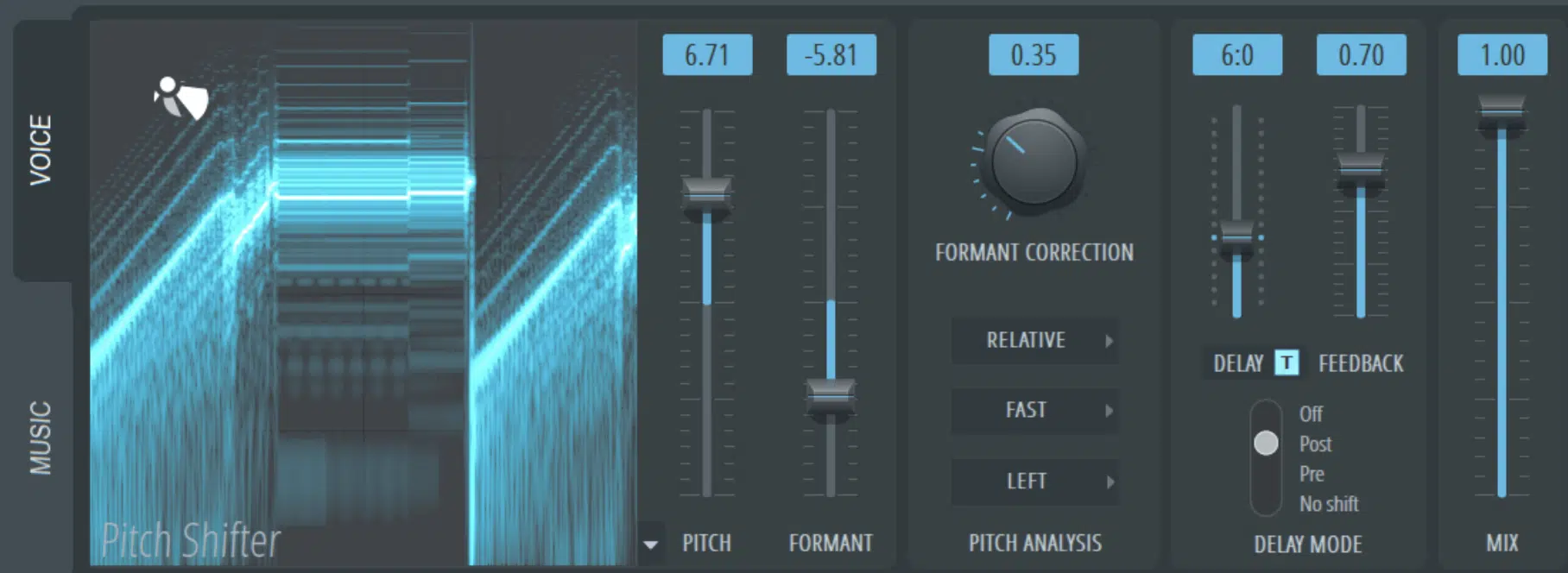
I know what you’re thinking… Do I really need to understand this music theory stuff if I’m a digital producer and everything is done for me?
Yes! Understanding pitch in music is key even if you’re primarily a digital producer because pitch determines the tuning and harmony of all elements in a track.
For example, when layering synths and samples, matching their pitches ensures a fluid sound that people can really vibe to.
Pitch in music also affects the emotional impact of a track, with:
- Higher pitches often create excitement.
- Lower pitches adding depth.
Plus, as we talked about, using pitch correction tools can enhance vocal recordings 一 making them sound professional and polished.
And remember, manipulating pitch creatively can lead to unique sounds and effects, setting your productions apart, so always keep experimenting and growing.
Knowledge of pitch enables precise control over every note and sound wave in your projects and, as a digital producer, mastering pitch helps you create tracks that are epic.
-
Pitch Manipulation: Last Minute Tips
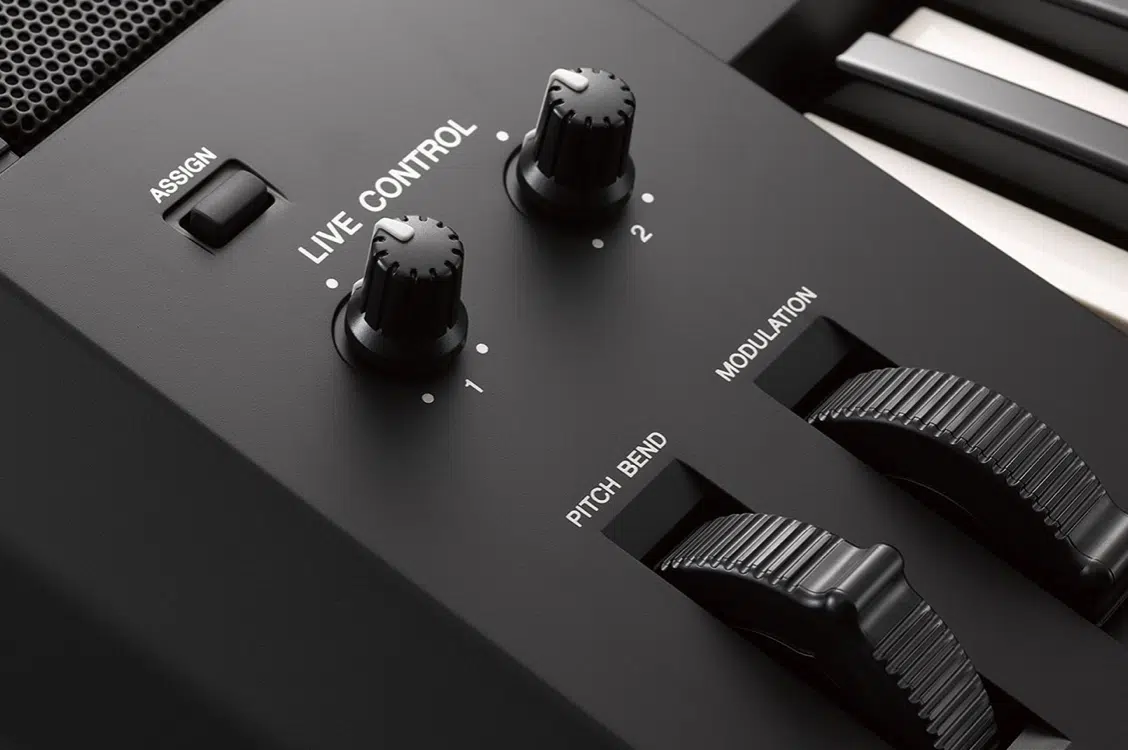
Creative pitch manipulation can add unique textures and effects to your music as we spoke about in the previous sections.
Techniques like pitch bending, where you gradually change the musical pitch of a note, can add expressiveness to a lead synth or guitar solo.
Harmonizing involves adding additional pitches to a melody or chord to create rich, layered sounds. For example, you can create vocal harmonies by duplicating a vocal track and shifting the pitch up or down by a specific interval, such as a third or fifth.
Understanding the concept of fundamental frequency is also essential, as it helps in designing basslines and kick drums that sit well in the mix without clashing with other elements. This ensures that the low end of your track is tight and powerful.
Knowledge of pitch enables precise control over a specific note and sound wave in your projects, allowing you to create tracks that are both technically sound and musically on point.
Bottom line, mastering pitch helps you lay down better melodies, achieve perfect harmony, and ensure your tracks sound professional and polished.
Pitch in Music: Final Thoughts
Pitch in music is a fundamental music theory concept that can influence every aspect of your productions.
It can help you create irresistible melodies, achieve perfect harmony, and fine-tune your tracks like never before.
Plus, mastering pitch enables you to manipulate sounds creatively and ensure your music stands out above all the competition.
As an added bonus, you’ve got to check out these epic Free Vocal Samples, which include 20 samples to add that missing piece to your tracks.
If you want your beats to be extra catchy, they’re exactly what you’re looking for.
They’re all proper, polished, and perfectly processed vocal samples created by expert vocalists and producers.
Meaning, you’ll never have to worry about the pitch or quality, as they’re all on point.
Remember, understanding and mastering pitch can elevate your music production skills to new heights, so don’t underestimate its power.
Keep experimenting, stay creative, and let pitch in music be your guide to producing some seriously amazing music.
Until next time…







Leave a Reply
You must belogged in to post a comment.